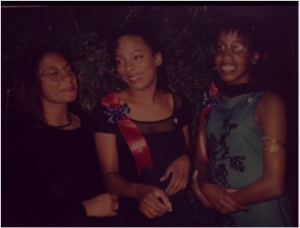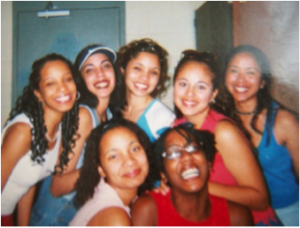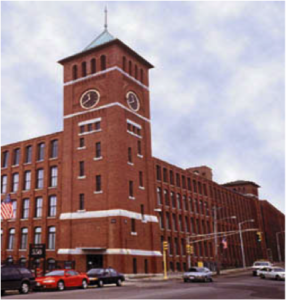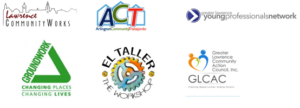Emerging from the Shadows of the “City of the Damned”
This post is an adaptation of a project by UEP student Sibu Malaba for Professor Lorlene Hoyt’s course on Community Development, Planning and Politics.
Located approximately 30 minutes north of Boston, nestled between the Essex County towns of Methuen and Andover, sits the city of Lawrence, Massachusetts. Established in the 1840s, Lawrence is known for many historical contributions including the early American textile industries, which set the stage for the labor movement (Bread and Roses Strike of 1912), and for being home to Pulitzer Prize winning poet, Robert Frost.
Lawrence, also known as the “Immigrant City”, maintains a unique history as “a multi-ethnic and multicultural gateway city for foreign-born residents, including the Irish, French Canadians, Englishmen, and German factory workers in the late 1800s; Italians, Poles, Lithuanians, and Syrians in the early 1900s; and Puerto Ricans and Dominicans in the mid to late 1900s; and the city’s newest arrivals of Vietnamese and Cambodians residents”[1].
After World War II, the departure of the city’s manufacturers resulted in the city’s transition from a former thriving region to one of the most marginalized municipalities in Massachusetts. As more and more factories closed, the former economic epicenter would be confronted with the loss of major employers, limited city resources, and stigmatism from neighboring towns, as characterized in Lorlene Hoyt and Andre Leroux’s, Voices of Forgotten Cities:
“The centripetal forces that once pulled people, resources, and businesses in [to the city] and created a rich density of urban civic life weakened over decades against a backdrop of national economic restructuring, changing technologies, and shifting government policy”[2].
Reflecting on Lawrence’s highs and lows remains personal for me, because it is the city I called home for the first 20 years of my life. My family moved to Lawrence in 1990 shortly after my sister and I were born. My mother and father, who immigrated to the United States from Kenya and Zimbabwe respectively, attended the nearby University of Massachusetts at Lowell campus. Like many other young, immigrant families, they sought Lawrence because of the affordable housing opportunities the city had to offer. Growing up in Lawrence was normal for me, despite being enveloped by many of the environmental impacts commonly associated with low-income cities.
From the 1990s to early 2000s, Lawrence’s trajectory seemed stagnant. The Lawrence Public Schools system was underperforming, teen pregnancy and youth violence remained high, city resources were low and local government faced growing accusations of corruption. All of these outcomes pushed my family to move from Lawrence in 2004. Though we were no longer residents, we remained affected by the unforgiving accounts of the city we loved. For example, in 2012, Boston Magazine profiled Lawrence in a piece titled, “City of the Damned”. In it, author Jay Atkinson wrote:
“Times are hard in the state’s poorest city. The mayor is under federal and state investigation for campaign-finance improprieties and other questionable behavior, while a state-appointed overseer is managing the city’s municipal budget. Lawrence’s public school system is in receivership — the former superintendent, Wilfredo Laboy, is under criminal indictment for fraud and embezzlement, and the high school dropout rate is more than 50 percent. Public-safety cuts have been drastic, and felony crimes have skyrocketed from 1,777 in 2009 to 2,597 during the first 11 months of 2011. Unemployment is as high as 18 percent, compared with the state average of less than 7 percent. With 76,000 people squeezed into 6.93 square miles, violent crime on the rise, and a public school system that’s the worst in the state, the once-proud “Immigrant City” has become an object lesson in how to screw things up”[3].
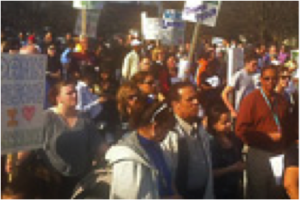
Lawrence residents protest Boston Magazine headquarters following “The City of the Damned” publication (Photo credit: WBUR)
But even in Lawrence’s most trying time, hope remained. Over the past decade or so, residents who stayed in the city or made their way back would go on to lead a series of successful community development initiatives aimed at redefining what it means to come from Lawrence. Hoyt and Leroux describe this shift, “In changing dysfunction to function, the collective, cumulative impact of hundreds of small but better decisions are revealed to be ultimately more powerful than the big project, the big investment, or the ‘silver bullet’ strategy”, which they dub “innovative revitalization coalitions”[4].
Real community development was beginning to happen in the city. As Lawrence native and former executive director of Lawrence CommunityWorks, William “Bill” Traynor illustrates, “I would describe our network in Lawrence not as an organization but as a bundle of thinking language habits, value propositions space and practice all designed to comprise an environment that effectively meet people where they are and offers myriad opportunities and levels of engagement”[5].
Examples of this type of community building include:
- Community development corporations (CDC), Lawrence CommunityWorks, Inc. and Groundwork Lawrence teamed up to launch “The Reviviendo Gateway Initiative (RGI)”, which was a neighborhood-based planning group which combined both organizations’ planning and organizing expertise to create a 15-year large-scale development master plan with the backing of local residents. Today, many aspects of the RGI visionary plan have been implanted or underway. http://www.lawrencecommunityworks.org/ http://www.groundworklawrence.org/
- With the assistance of federal Community Service Block Grants, the Greater Lawrence Community Action Council, Inc. has launched a 3-year Community Action Plan that aims to fill service gaps in Lawrence as identified by community-driven needs assessments. Through the Community Action Plan, GLCACI is incrementally addressing issues of immigration, underemployment, and affordable housing access in Lawrence. http://www.glcac.org/
- Arlington Community Trabajando (ACT) is a CDC created following the 1995 Malden Mills factory fire in Lawrence’s Arlington neighborhood, which resulted in the loss of 3,000 local jobs. ACT works to revitalize the 11-block neighborhood, which maintains the “highest concentration of residents living in poverty in the city”. Since its launch, ACT has helped improve opportunities for more than 900 families through business development, financial literacy education, foreclosure prevention counseling, and homeownership education. http://actinc.org/
- Located in the center of downtown Lawrence, El Taller Café and Bookstore provides residents with an open space for creativity and community building. El Taller provides an environment for residents to exchange ideas and build community through neighborhood discussions, workshops, and art showcases. http://eltallerarts.com/
- The Greater Lawrence Young Professionals Network (GLYPN) is a membership organization created “to attract, retain, and engage young professionals in the Greater Lawrence area”. After graduating college, a group of young professionals returned to Lawrence and were alarmed by the lack of social and professional development opportunities that exist in the city. GLYPN addresses this need by offering leadership development training, networking opportunities, and fun social activities that help support businesses in the greater Lawrence area. http://www.glypn.org/
In Lawrence, community development means “accepting the city’s new reality while fully recognizing the potential [its] many assets (proximity to larger cities, walkable downtowns and neighborhoods, historic mills and churches, affordable housing opportunities and cultural amenities)”[6]. Lawrence residents are embodying the principles of community development by working together to organize around pressing neighborhood issues. Lawrencians are becoming empowered citizens and demonstrating such by buying homes, opening small businesses, leading neighborhood projects, and seeking public office.
Today, the city is steadily moving beyond its turbulent past and rebranding itself as a city of opportunity. Lawrence’s rebirth is a great example of how communities can work collectively to change their realities. I could not be more proud of my city and look forward to its future as the community development work continues. I am also confident in the new Lawrence leaders who remain resilient in their efforts towards progress. Fellow Lawrencians like Mayor Dan Rivera, Pavel Payano, Marcos Devers, Luisa Pena, Wilnelia Rivera, Lydia and Flor Maldonado, Jessica Valentin, Frank Moran, Kendrys Vasquez, Abel Varges, and countless others make me excited for what is to come in Lawrence.
“If Lawrence is a city of the damned, it is the damned hardworking, the damned hopeful and the damned resilient” –Lawrence Mayor Daniel Rivera (then Lawrence City Council President)
[1] City of Lawrence, http://www.cityoflawrence.com/about-the-city.aspx
[2] Lorlene Hoyt and Andre Leroux, Voices of Forgotten Cities (Cambridge, 2007), 23
[3] Jay Atkinson, “City of the Damned,” Boston Magazine http://www.bostonmagazine.com/2012/02/city-of-the-damned-lawrence-massachusetts/
[4] Lorlene Hoyt and Andre Leroux, Voices of Forgotten Cities (Cambridge, 2007), 17
[5] Bill Traynor, “The Community Builder” The Community Development Reader (New York, 2005), 217
[6] Lorlene Hoyt and Andre Leroux, Voices of Forgotten Cities (Cambridge, 2007), 46

